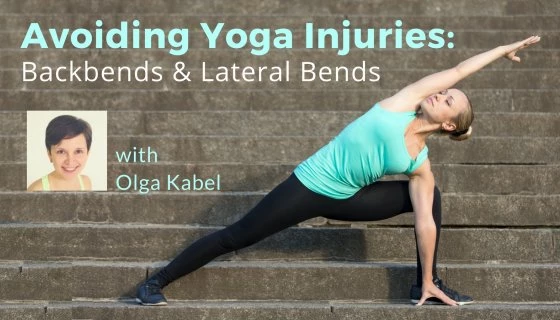Lengthen Your Spine: How to Make Axial Extension the Focus of Your Yoga Practice
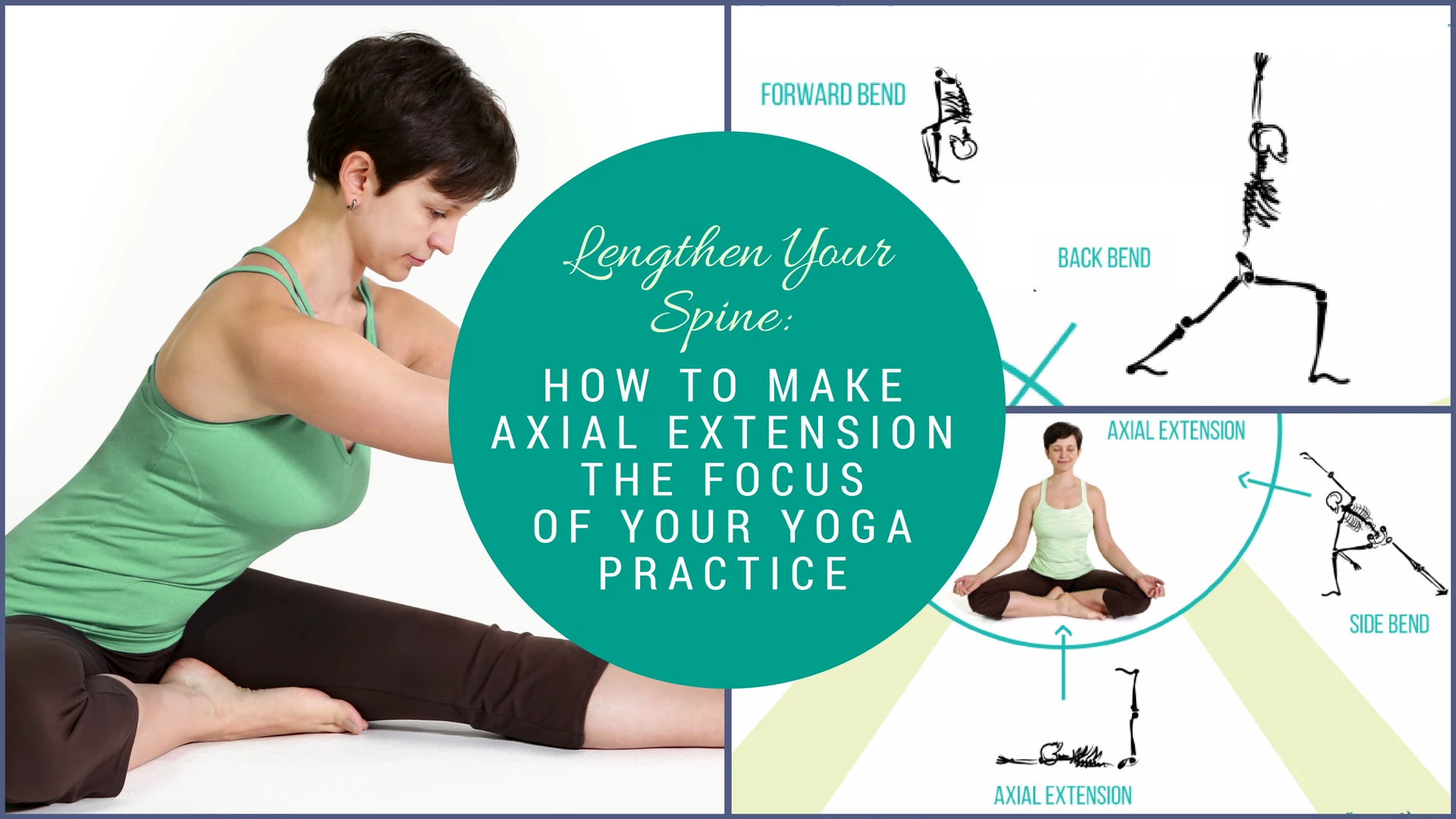
At a first glance, it might seem that axial extension poses are easy—what’s so hard about sitting upright and breathing for a while? But we all know that the challenge here is the subtle work that takes place, as well as being able to maintain the position for some time without muscle fatigue. There are two main ways of working with axial extension postures: you can make them the focus of the practice, or you can use them as compensation/transition postures throughout to create a more balanced and safe sequence. Let’s take a closer look at those two options.
You can make any extension posture your goal posture and organize the entire practice around preparing for it. I have taught practices where Adho Mukha Svanasana (Downward Facing Dog Pose) was a goal posture, or Supta Padangusthasana (Supine Big Toe Pose), for example. But probably the most obvious choices for the goal posture when it comes to axial extension are Maha Mudra and Sukhasana (Easy Pose).
In the Viniyoga tradition Maha Mudra is considered a remarkable pose, a quintessential yoga asana, because it combines the elements of all other directional movements of the spine: it is part forward bend (because you are leaning forward), part backbend (because you are pulling the chest away from the navel), part twist (because you are turned toward one leg) and part lateral bend (because one side of the body ends up longer than the other). But the purpose here, of course, is to lengthen the spine, which makes it an axial extension posture. So while working on this one pose you get a chance to embody the essence of every directional movement of the spine and work on creating an energetic path along the spine. That is why, when done properly, this pose can be very powerful in its ability to integrate different parts of the body and create a sense of stillness and spaciousness.
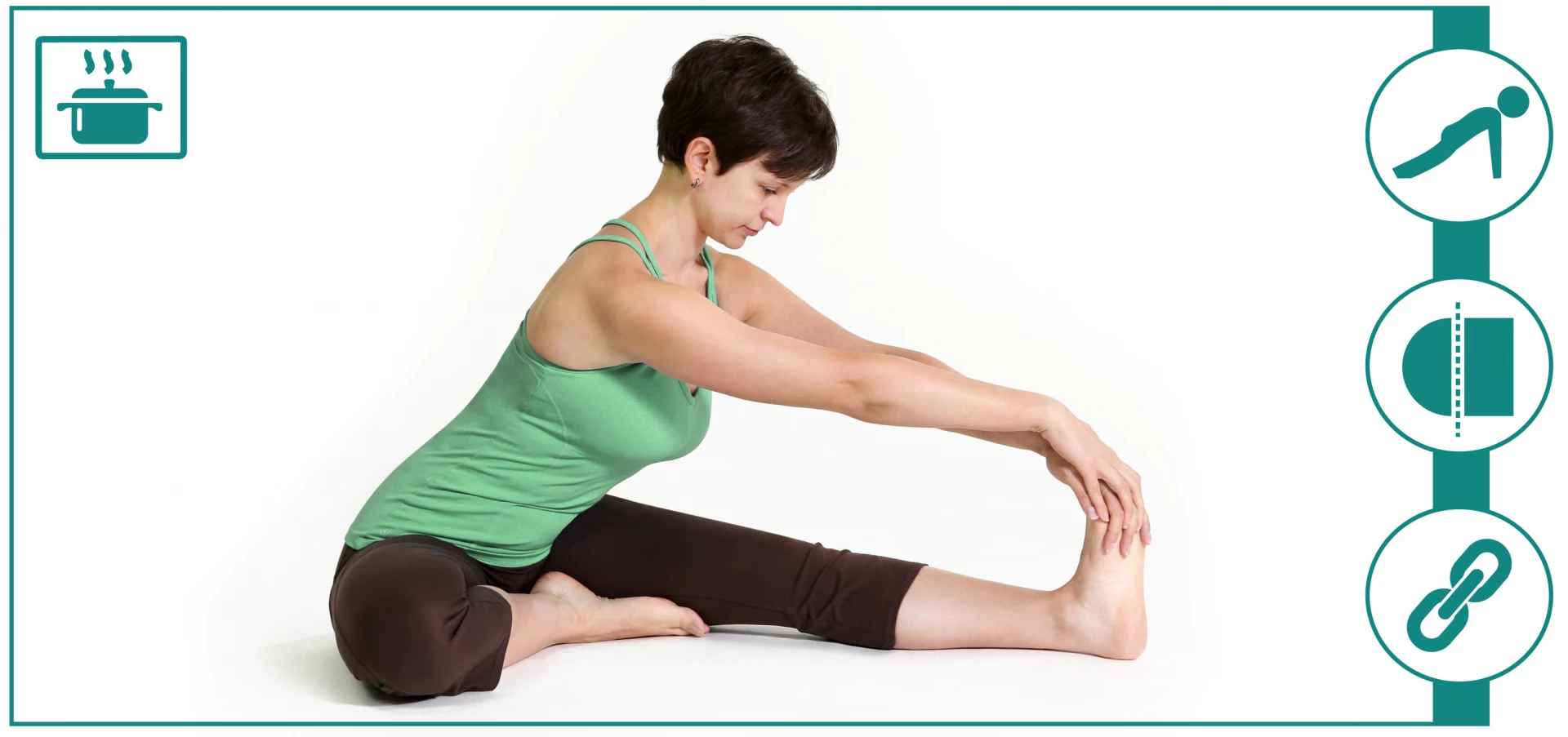
Use pose above to …
1) To prepare for spinal axial extension
2) To prepare for neck lengthening
3) To prepare for the action of the chest moving away from the navel
4) To stretch the hamstrings
5) To stretch the calves
6) To prepare the hips for external rotation
7) To prepare the arms for the foot-holding action
Since this pose contains the elements of all other directional movements of the spine, if we plan to spend some time working on it, we would usually include forward bends, backbends, twists, lateral bends and other axial extension postures in the practice to make sure that we prepare the body adequately. We also need to prepare the neck, hips, and legs for this pose. Once we arrive at the pose, we usually take time to explore it, working on the subtleties of body alignment and choosing the breathing practices that support that exploration.
When it comes to Easy Pose, the focus is slightly different. Here we are more concerned with being able to maintain the position for an extended period of time so that we could work on breathing and meditation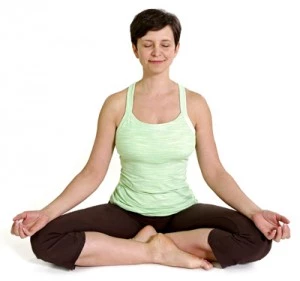 practices. This means that we need to foresee what kind of challenges we might encounter and try to prepare the body to handle them. Here the postural muscles that provide support for the core and the neck are the most important ones. The core muscles wrap the body from the front, side and back like a tight package, which means that to activate them we need to do forward bending, backbending, twisting and lateral bending, as well. So here, again, we usually do poses that touch on every directional movement of the spine. In addition, we usually add arm movements to prepare the neck and some external hip rotation movements to prepare the hips for sitting. That is why we rarely do extended sitting at the beginning of the yoga class. You need to be a very experienced practitioner to be able to stay still, upright and focused without any movement preparation.
practices. This means that we need to foresee what kind of challenges we might encounter and try to prepare the body to handle them. Here the postural muscles that provide support for the core and the neck are the most important ones. The core muscles wrap the body from the front, side and back like a tight package, which means that to activate them we need to do forward bending, backbending, twisting and lateral bending, as well. So here, again, we usually do poses that touch on every directional movement of the spine. In addition, we usually add arm movements to prepare the neck and some external hip rotation movements to prepare the hips for sitting. That is why we rarely do extended sitting at the beginning of the yoga class. You need to be a very experienced practitioner to be able to stay still, upright and focused without any movement preparation.
So to sum it up: if you choose to build your class around an extension posture, you will probably need to include all other directional movements of the spine in your practice to prepare the body properly and to allow a meaningful exploration of the full potential of the axial extension pose.
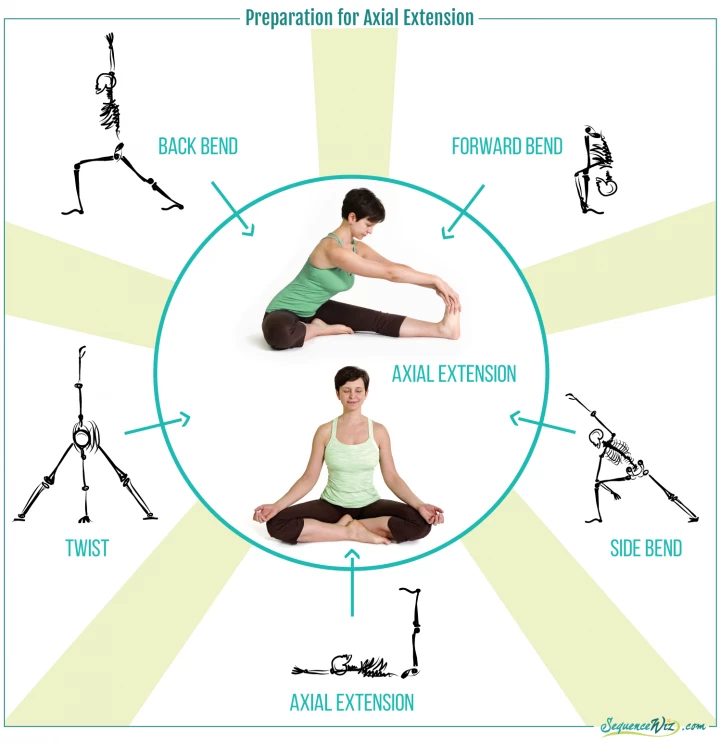
If avoiding injuries and correct alignment is important to your practice – Study with Olga Kabel and YogaUOnline – Avoiding Yoga Injuries: Common Alignment Mistakes with Backbends and Lateral Bends.
Would you like more on Axial Extension Poses? If so, here is another great article from Olga Kabel- 4 Yoga Poses to Increase Axial Extension.
Reprinted with permission from sequencewiz.com
 Educated as a school teacher, Olga Kabel has been teaching yoga for over 14 years. She completed multiple Yoga Teacher Training Programs but discovered the strongest connection to the Krishnamacharya/ T.K.V. Desikachar lineage. She had studied with Gary Kraftsow and American Viniyoga Institute (2004-2006) and received her Viniyoga Teacher diploma in July 2006 becoming an AVI-certified Yoga Therapist in April 2011. Olga is a founder and managing director of Sequence Wiz- a web-based yoga sequence builder that assists yoga teachers and yoga therapists in creating and organizing yoga practices. It also features simple, informational articles on how to sequence yoga practices for maximum effectiveness. Olga strongly believes in the healing power of this ancient discipline on every level: physical, psychological, and spiritual. She strives to make yoga practices accessible to students of any age, physical ability and medical history specializing in helping her students relieve muscle aches and pains, manage stress and anxiety, and develop mental focus.
Educated as a school teacher, Olga Kabel has been teaching yoga for over 14 years. She completed multiple Yoga Teacher Training Programs but discovered the strongest connection to the Krishnamacharya/ T.K.V. Desikachar lineage. She had studied with Gary Kraftsow and American Viniyoga Institute (2004-2006) and received her Viniyoga Teacher diploma in July 2006 becoming an AVI-certified Yoga Therapist in April 2011. Olga is a founder and managing director of Sequence Wiz- a web-based yoga sequence builder that assists yoga teachers and yoga therapists in creating and organizing yoga practices. It also features simple, informational articles on how to sequence yoga practices for maximum effectiveness. Olga strongly believes in the healing power of this ancient discipline on every level: physical, psychological, and spiritual. She strives to make yoga practices accessible to students of any age, physical ability and medical history specializing in helping her students relieve muscle aches and pains, manage stress and anxiety, and develop mental focus.


